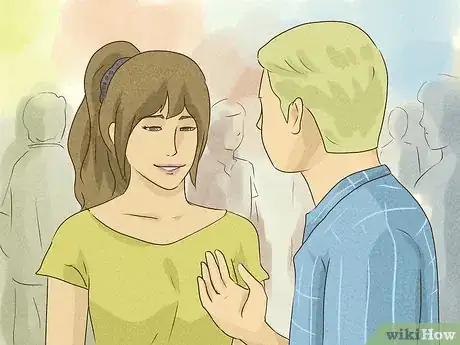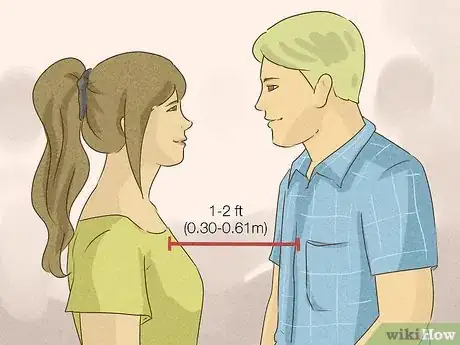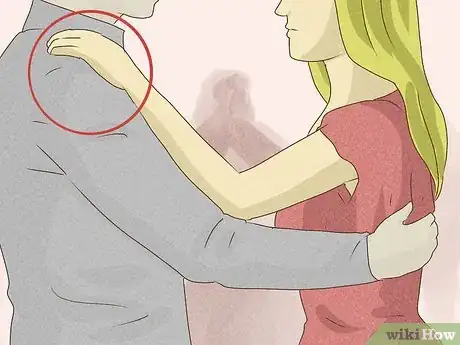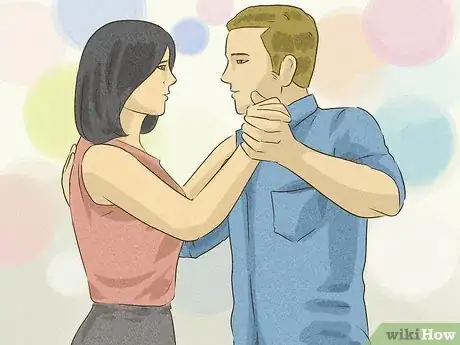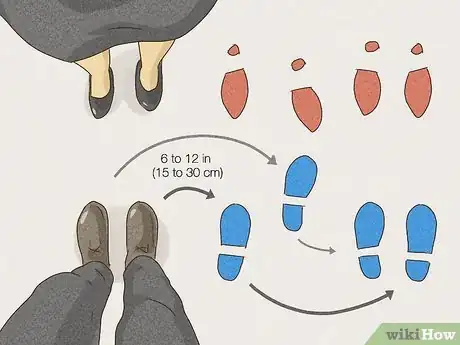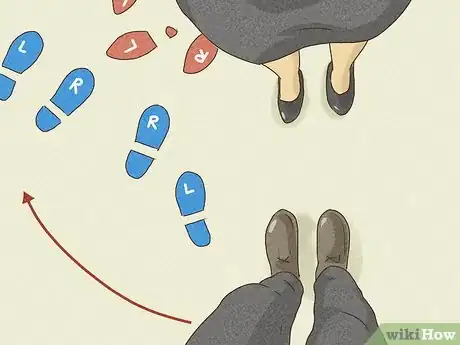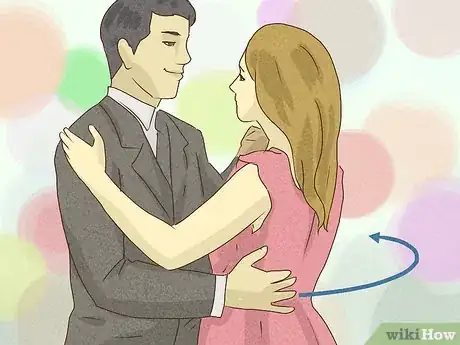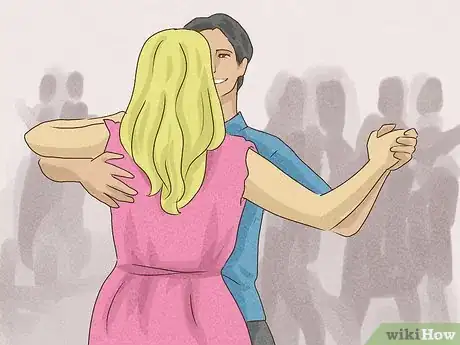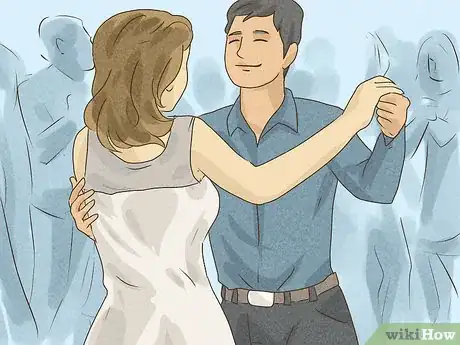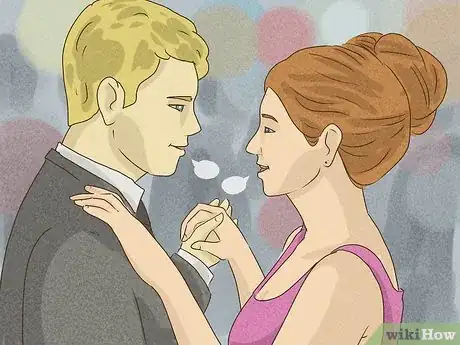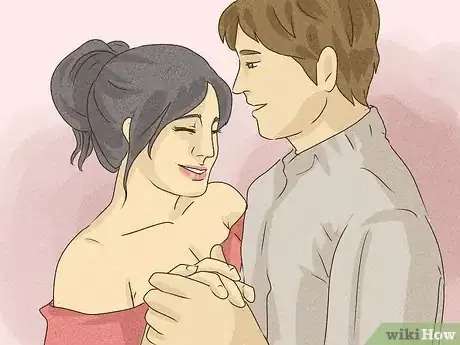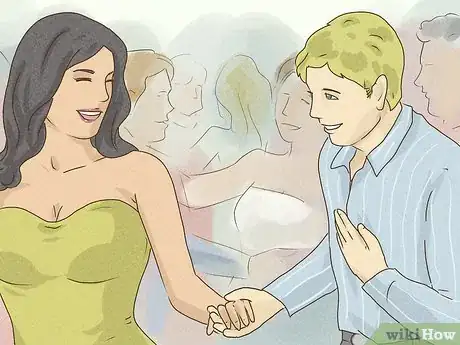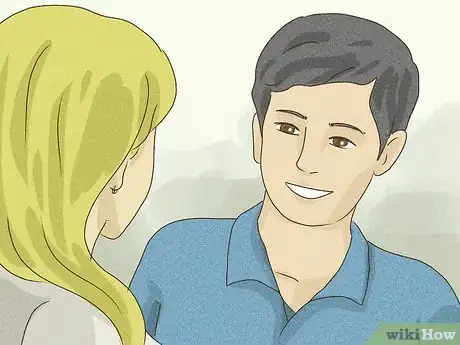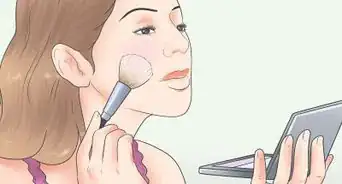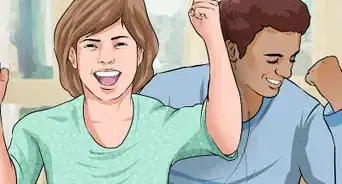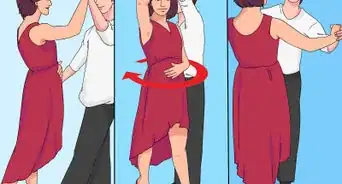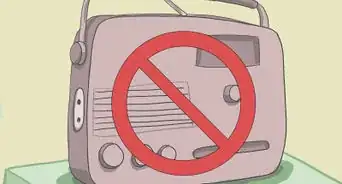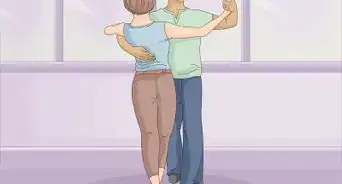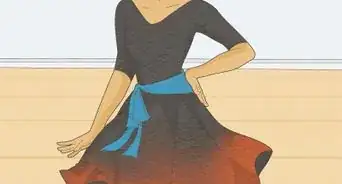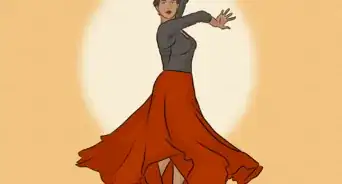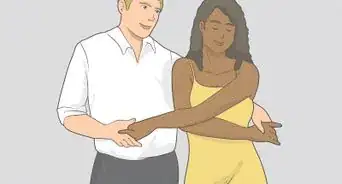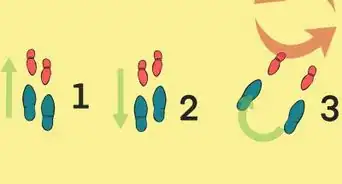This article was co-authored by William Orrock and by wikiHow staff writer, Janice Tieperman. William Orrock is a Professional Dancer, Instructor, Group Fitness Instructor, and the Owner of We Evolve Dance. With more than 22 years of experience, he specializes in performance, social dancing instruction, competitive dance preparation, and wedding choreography. William holds a Bachelor's degree in Contemporary Dance with a minor in Choreography from Universidad Las Americas-Chile and a second minor in Acting from Foothill College Acting Conservatory. He is also a national champion in Latin American Dancing, a former dancer for Dancing with the Stars Chile, and a certified judge for ballroom competitions.
There are 11 references cited in this article, which can be found at the bottom of the page.
wikiHow marks an article as reader-approved once it receives enough positive feedback. This article received 13 testimonials and 82% of readers who voted found it helpful, earning it our reader-approved status.
This article has been viewed 1,367,358 times.
The "slow dance" is different than the typically upbeat sets enjoyed in the course of the average dance. It allows for a flirty or possibly romantic moment with your partner. If you would like to be able to master this skill, you just have to learn a few basic moves, trust your partner, have a little confidence, and glide gracefully to the music. If you want to master slow dancing in no time, just follow these steps.
Steps
Getting in the Starting Position
-
1Ask your potential partner if they’d like to dance with you. Choose a possible partner for a slow dance, whether it’s a friend, acquaintance, or crush. Try not to overthink your invitation—for any slow dance, a simple, polite invitation will get the job done. As you invite someone to dance, always give them the option of yes or no, unless the dance is undoubtedly going to happen, like at a wedding.[1]
- For instance, a simple “Would you like to dance?” can go a long way, and gives your potential partner the option to say yes or no.
- You can always try something more traditional, like “Shall we dance?” “Care to dance?” or “May I have this dance?”[2]
- Don’t be discouraged if your initial partner rejects your offer. There are plenty of people at a dance that are willing and able to dance with you instead!
- Try to find an open spot on the dance floor so you won’t bump into someone by accident.[3]
-
2Stand about 1 to 2 ft (0.30 to 0.61 m) away from your partner.[4] Give yourself and your partner a little breathing room while still staying close together. If you’re especially friendly with your dance partner, you can stand even closer together.[5]Advertisement
-
3Lead the dance by curving your right elbow beneath their left armpit. Tuck your right elbow beneath your dance partner’s armpit so you’re both close together. Since you’re leading the dance, rest your right hand lightly on your partner’s left shoulder blade, which allows you to guide your partner gently without being too forceful.[6]
- In any type of dance, you never want to force your partner in any direction. Keep your arm steady, but don’t push against your partner’s back.
-
4Drape your left arm and hand on your partner’s right shoulder if they initiated the dance. Place your left arm on top of your partner’s right arm, leaving your hand on their right shoulder. Lightly grip their shoulder so you can stay balanced, but try not to claw or squeeze their arm in the process.[7]
-
5Hold your partner’s free hand around their eye level. Clasp your partner’s hand lightly so you both stay balanced throughout the dance. Keep both your hands at the eye level of the shortest person, so the dance isn’t uncomfortable or awkward.[8]
- If you’re really comfortable with your dance partner, 1 person can wrap their arms around their partner’s neck while the other person positions their hands on their partner’s waist. This is a great option for couples slow dancing.[9]
Dancing with Your Partner
-
1Step to the left with your partner. Move your left foot about 6 to 12 in (15 to 30 cm) to the left, then bring your right foot over. Repeat this step by stepping to the left with your left foot again and moving your right foot over once more.[10]
- You and your dance partner’s feet should be in sync when you do this.
-
2Go in reverse by stepping to the right. As you did before, shift your right foot about 6 to 12 in (15 to 30 cm) to the right, then bring your left foot over. Step to the right 1 more time, then bring your feet together. Continue stepping to the right and left to complete a basic slow dance![11]
- Don’t worry if you mess up a step, or if you step on your partner’s feet by accident. It’s perfectly normal to feel nervous while you dance. If you step on your partner’s toes, just apologize and continue on with the dance.
-
3Angle your feet while stepping to go in a circle with your partner. Instead of stepping in a straight line, position your right or left foot in a diagonal line. Bring your opposite foot forward and backward so it’s in line with your leading foot. Continue stepping at an angle to guide your slow dance in a circle.[12]
- This technique can be a little risky if the dance floor is crowded. Try this move at your own discretion!
-
4Turn your partner while performing the basic slow dance steps.[13] Count to 8 while slow stepping to the right and left. Take 4 more slow steps to the right and lift your right hand from your partner’s back, lowering your arm so they know you’re about to turn them. Step to the left 4 more times, then lift your left hand up to spin your partner comfortably in the dance. Take 4 more slow steps to the right and move your right arm back beneath your partner’s armpit and over their shoulder blade.[14]
- Since your dance will be slow, you have plenty of time to guide your partner through the turn.
-
5Pivot your body to the beat if you’re being turned. Follow along with your partner as you take 4 slow steps to the right and 4 more slow steps back to the left. Step with your right foot to the right, turning it outwards so you can begin to rotate. Spin slowly on your right foot, bringing your left foot to the right of your right foot. Turn 1 more time and step out with your right foot, then bring both of your feet together. As you complete the step, return your hands to their original position[15]
- Try not to overthink this—instead, try following your partner’s cues and going to the beat of the music.
-
6Dip your partner to add some pizzazz to your dance. Complete 8 basic slow steps, then guide your partner a couple of steps away. Spin your partner closer, guiding their right hand to your left shoulder. Rest both of your hands behind their back, then guide your partner backward in a “dip.” For this to be successful, bend your left knee forward slightly so you can fully support your partner in the dip. Turn your partner back into your original dancing position, and continue on with your slow dance as usual![16]
- If you’re being dipped, you’ll also want to bend your right knee as you lean back into your leading partner’s left arm. Keep your left leg extended and pointed forward while your right arm is draped behind their neck and shoulders.
-
7Move to the beat of the music as you dance. Don’t worry if you don’t have a lot of dance experience under your belt—instead, let the music be your guide! Step in time with the beat of the song. If you’re feeling especially bold, try timing your dips and spins to the beat as well![17]
Socializing During and After the Dance
-
1Start making small talk if you don’t want to dance in silence. Think about basic things you can talk about, even if they seem cliche or mundane. Try to ask your partner open-ended questions that spark a conversation. It’s okay if you can’t get any dialogue going—just do your best to relax and enjoy the dance.[18]
- For instance, if you’re at a school dance, you can ask your partner about their classes.
- Cliche questions like “Are you having a good time?” can help fill the space in a conversation if you aren’t sure what to talk about.
-
2Compliment your partner while you dance together. Offer polite, tasteful comments about your partner, even if you’re complimenting them on something simple. Kind words can go a long way, especially if you’re dancing with someone you don’t know that well.[19]
- For example, you can say something like “Nice moves!” or “Great job with that turn!”
-
3Thank your dance partner when the dance is over. Offer a brief thank you, even if your dance was short and awkward. Let your partner know that you appreciated dancing with them, even if it was only for a few minutes.[20]
- When someone thanks you for a dance, the proper etiquette is to say “thanks” in return, instead of something like “you’re welcome.”
-
4Ask if you can hang out after the dance is over. If you and your partner really hit it off during the slow dance, see if they’re interested in spending more time with you! Offer to grab them a drink, or ask if you can spend time with their group of friends.[21]
- Don’t feel too bad if your partner doesn’t want to hang out afterward. You can always dance with someone else, or spend time with your own friends at the dance!
Expert Q&A
Did you know you can get premium answers for this article?
Unlock premium answers by supporting wikiHow
-
QuestionHow do you start slow dancing?
 Andrey StanevAndrey Stanev is a Professional Dance Instructor specializing in ballroom, Latin and wedding dance. With over 25 years of instruction and dancing experience, Andrey is also the Owner of Ballroom Dance in NYC, a studio based in Manhattan, New York and in Hawthorne, New York. He was born and raised in Bulgaria and won the Bulgarian National Championship for Ballroom and Latin Dance in 2000-2001. He has also worked at the Fred Astaire Dance Studio where he received the Award for Outstanding Performance in the advanced department of teaching.
Andrey StanevAndrey Stanev is a Professional Dance Instructor specializing in ballroom, Latin and wedding dance. With over 25 years of instruction and dancing experience, Andrey is also the Owner of Ballroom Dance in NYC, a studio based in Manhattan, New York and in Hawthorne, New York. He was born and raised in Bulgaria and won the Bulgarian National Championship for Ballroom and Latin Dance in 2000-2001. He has also worked at the Fred Astaire Dance Studio where he received the Award for Outstanding Performance in the advanced department of teaching.
Professional Dance Instructor
-
QuestionI have to slow dance for a friends party but I am so nervous—I dont even know the guy I‘m dancing with. What do I do?
 wikiHow Staff EditorThis answer was written by one of our trained team of researchers who validated it for accuracy and comprehensiveness.
wikiHow Staff EditorThis answer was written by one of our trained team of researchers who validated it for accuracy and comprehensiveness.
Staff Answer wikiHow Staff EditorStaff Answer
wikiHow Staff EditorStaff Answer -
QuestionHow do you know if your partner is going for the arms on waist/arms on shoulders or if they are going the hand in hand one hand on shoulder/waist? Just so that it wouldnt get awkward when you dance.
 wikiHow Staff EditorThis answer was written by one of our trained team of researchers who validated it for accuracy and comprehensiveness.
wikiHow Staff EditorThis answer was written by one of our trained team of researchers who validated it for accuracy and comprehensiveness.
Staff Answer wikiHow Staff EditorStaff Answer
wikiHow Staff EditorStaff Answer
References
- ↑ https://www.thegentlemansjournal.com/article/rock-steady-art-slow-dance-get-right/
- ↑ https://personal.utdallas.edu/~aria/dance/etiquette.html
- ↑ https://personal.utdallas.edu/~aria/dance/etiquette.html
- ↑ Andrey Stanev. Professional Dance Instructor. Expert Interview. 20 May 2020.
- ↑ https://m.youtube.com/watch?v=N6t0yjNBc84&t=0m24s
- ↑ https://m.youtube.com/watch?v=N6t0yjNBc84&t=0m30s
- ↑ https://m.youtube.com/watch?v=N6t0yjNBc84&t=0m30s
- ↑ https://m.youtube.com/watch?v=N6t0yjNBc84&t=0m38s
- ↑ https://www.seventeen.com/life/g26067631/how-to-dance-at-prom/
- ↑ https://www.seventeen.com/life/g26067631/how-to-dance-at-prom/
- ↑ https://www.seventeen.com/life/g26067631/how-to-dance-at-prom/
- ↑ https://www.seventeen.com/life/g26067631/how-to-dance-at-prom/
- ↑ William Orrock. Professional Dancer & Instructor. Expert Interview. 5 July 2022.
- ↑ https://m.youtube.com/watch?v=N6t0yjNBc84&t=2m49s
- ↑ https://m.youtube.com/watch?v=N6t0yjNBc84&t=3m23s
- ↑ https://m.youtube.com/watch?v=N6t0yjNBc84&t=4m2s
- ↑ https://www.thegentlemansjournal.com/article/rock-steady-art-slow-dance-get-right/
- ↑ https://www.thegentlemansjournal.com/article/rock-steady-art-slow-dance-get-right/
- ↑ https://personal.utdallas.edu/~aria/dance/etiquette.html
- ↑ https://personal.utdallas.edu/~aria/dance/etiquette.html
- ↑ https://www.thegentlemansjournal.com/article/rock-steady-art-slow-dance-get-right/
About This Article
The easiest way to slow dance is to sway back and forth as you and your partner rotate in place. Hold your partner’s hand and place your other hand on their upper arm or waist. Face your partner so your faces are 1-2 feet (0.3-0.6 meters) apart. Slowly shift your weight from one foot to the other, back and forth, so you’re swaying. Keep reading to learn how you can lead (or be led) while slow dancing!
